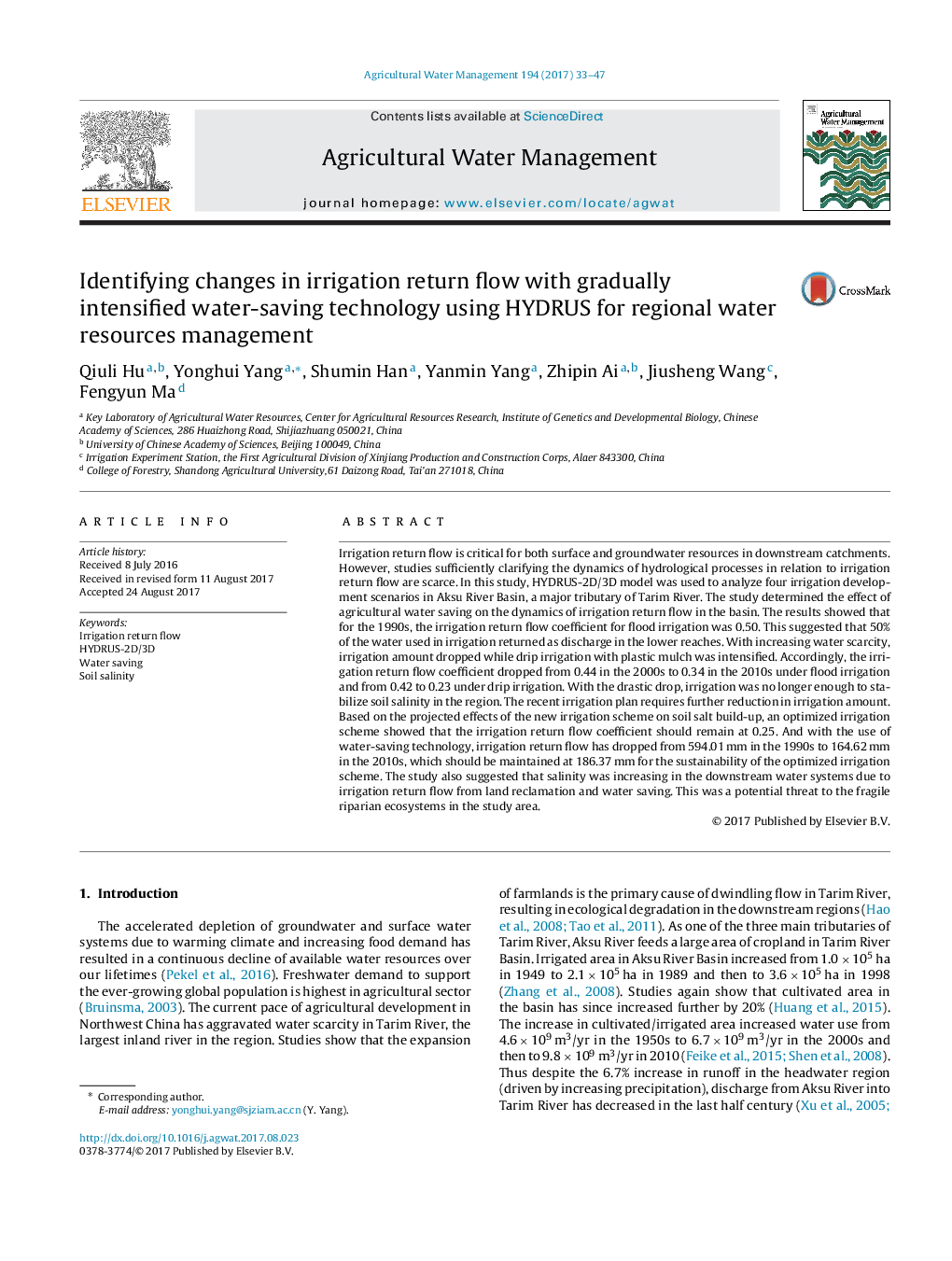| کد مقاله | کد نشریه | سال انتشار | مقاله انگلیسی | نسخه تمام متن |
|---|---|---|---|---|
| 5758466 | 1622886 | 2017 | 15 صفحه PDF | دانلود رایگان |
عنوان انگلیسی مقاله ISI
Identifying changes in irrigation return flow with gradually intensified water-saving technology using HYDRUS for regional water resources management
دانلود مقاله + سفارش ترجمه
دانلود مقاله ISI انگلیسی
رایگان برای ایرانیان
کلمات کلیدی
موضوعات مرتبط
علوم زیستی و بیوفناوری
علوم کشاورزی و بیولوژیک
علوم زراعت و اصلاح نباتات
پیش نمایش صفحه اول مقاله

چکیده انگلیسی
Irrigation return flow is critical for both surface and groundwater resources in downstream catchments. However, studies sufficiently clarifying the dynamics of hydrological processes in relation to irrigation return flow are scarce. In this study, HYDRUS-2D/3D model was used to analyze four irrigation development scenarios in Aksu River Basin, a major tributary of Tarim River. The study determined the effect of agricultural water saving on the dynamics of irrigation return flow in the basin. The results showed that for the 1990s, the irrigation return flow coefficient for flood irrigation was 0.50. This suggested that 50% of the water used in irrigation returned as discharge in the lower reaches. With increasing water scarcity, irrigation amount dropped while drip irrigation with plastic mulch was intensified. Accordingly, the irrigation return flow coefficient dropped from 0.44 in the 2000s to 0.34 in the 2010s under flood irrigation and from 0.42 to 0.23 under drip irrigation. With the drastic drop, irrigation was no longer enough to stabilize soil salinity in the region. The recent irrigation plan requires further reduction in irrigation amount. Based on the projected effects of the new irrigation scheme on soil salt build-up, an optimized irrigation scheme showed that the irrigation return flow coefficient should remain at 0.25. And with the use of water-saving technology, irrigation return flow has dropped from 594.01Â mm in the 1990s to 164.62Â mm in the 2010s, which should be maintained at 186.37Â mm for the sustainability of the optimized irrigation scheme. The study also suggested that salinity was increasing in the downstream water systems due to irrigation return flow from land reclamation and water saving. This was a potential threat to the fragile riparian ecosystems in the study area.
ناشر
Database: Elsevier - ScienceDirect (ساینس دایرکت)
Journal: Agricultural Water Management - Volume 194, December 2017, Pages 33-47
Journal: Agricultural Water Management - Volume 194, December 2017, Pages 33-47
نویسندگان
Qiuli Hu, Yonghui Yang, Shumin Han, Yanmin Yang, Zhipin Ai, Jiusheng Wang, Fengyun Ma,